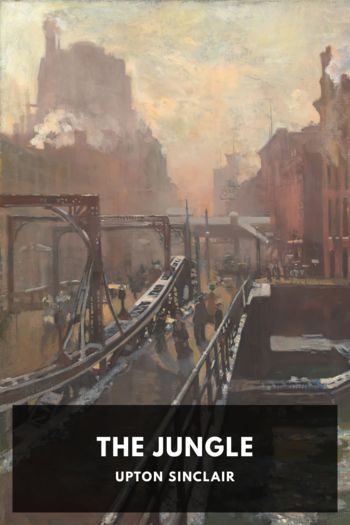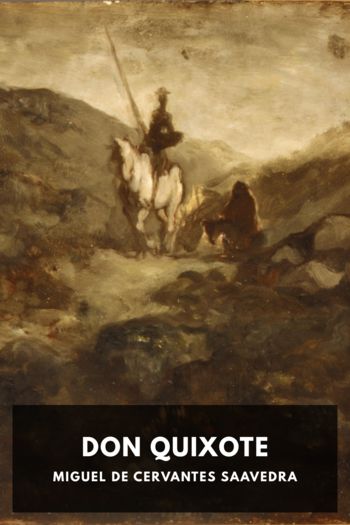The Jungle by Upton Sinclair (easy to read books for adults list TXT) 📕

- Author: Upton Sinclair
Book online «The Jungle by Upton Sinclair (easy to read books for adults list TXT) 📕». Author Upton Sinclair
Then the party went across the street to where they did the killing of beef—where every hour they turned four or five hundred cattle into meat. Unlike the place they had left, all this work was done on one floor; and instead of there being one line of carcasses which moved to the workmen, there were fifteen or twenty lines, and the men moved from one to another of these. This made a scene of intense activity, a picture of human power wonderful to watch. It was all in one great room, like a circus amphitheatre, with a gallery for visitors running over the centre.
Along one side of the room ran a narrow gallery, a few feet from the floor; into which gallery the cattle were driven by men with goads which gave them electric shocks. Once crowded in here, the creatures were prisoned, each in a separate pen, by gates that shut, leaving them no room to turn around; and while they stood bellowing and plunging, over the top of the pen there leaned one of the “knockers,” armed with a sledgehammer, and watching for a chance to deal a blow. The room echoed with the thuds in quick succession, and the stamping and kicking of the steers. The instant the animal had fallen, the “knocker” passed on to another; while a second man raised a lever, and the side of the pen was raised, and the animal, still kicking and struggling, slid out to the “killing-bed.” Here a man put shackles about one leg, and pressed another lever, and the body was jerked up into the air. There were fifteen or twenty such pens, and it was a matter of only a couple of minutes to knock fifteen or twenty cattle and roll them out. Then once more the gates were opened, and another lot rushed in; and so out of each pen there rolled a steady stream of carcasses, which the men upon the killing-beds had to get out of the way.
The manner in which they did this was something to be seen and never forgotten. They worked with furious intensity, literally upon the run—at a pace with which there is nothing to be compared except a football game. It was all highly specialized labor, each man having his task to do; generally this would consist of only two or three specific cuts, and he would pass down the line of fifteen or twenty carcasses, making these cuts upon each. First there came the “butcher,” to bleed them; this meant one swift stroke, so swift that you could not see it—only the flash of the knife; and before you could realize it, the man had darted on to the next line, and a stream of bright red was pouring out upon the floor. This floor was half an inch deep with blood, in spite of the best efforts of men who kept shovelling it through holes; it must have made the floor slippery, but no one could have guessed this by watching the men at work.
The carcass hung for a few minutes to bleed; there was no time lost, however, for there were several hanging in each line, and one was always ready. It was let down to the ground, and there came the “headsman,” whose task it was to sever the head, with two or three swift strokes. Then came the “floorsman,” to make the first cut in the skin; and then another to finish ripping the skin down the centre; and then half a dozen more in swift succession, to finish the skinning. After they were through, the carcass was again swung up; and while a man with a stick examined the skin, to make sure that it had not been cut, and another rolled it up and tumbled it through one of the inevitable holes in the floor, the beef proceeded on its journey. There were men to cut it, and men to split it, and men to gut it and scrape it clean inside. There were some with hose which threw jets of boiling water upon it, and others who removed the feet and added the final touches. In the end, as with the hogs, the finished beef was run into the chilling-room, to hang its appointed time.
The visitors were taken there and shown them, all neatly hung in rows, labelled conspicuously with the tags of the government inspectors—and some, which had been killed by a special process, marked with the sign of the “kosher” rabbi,





Comments (0)